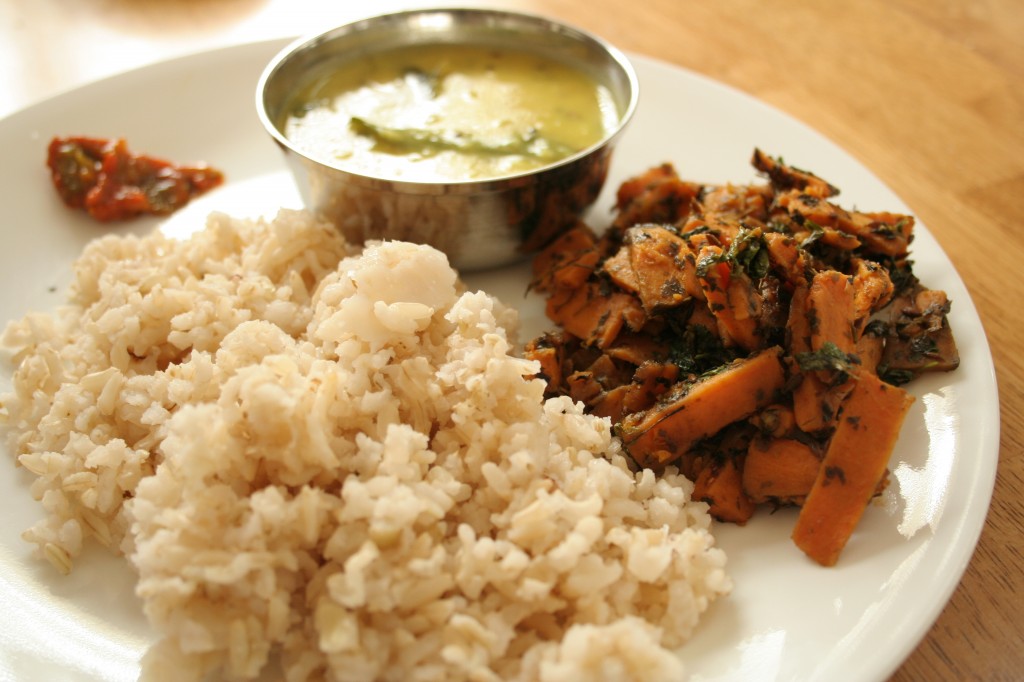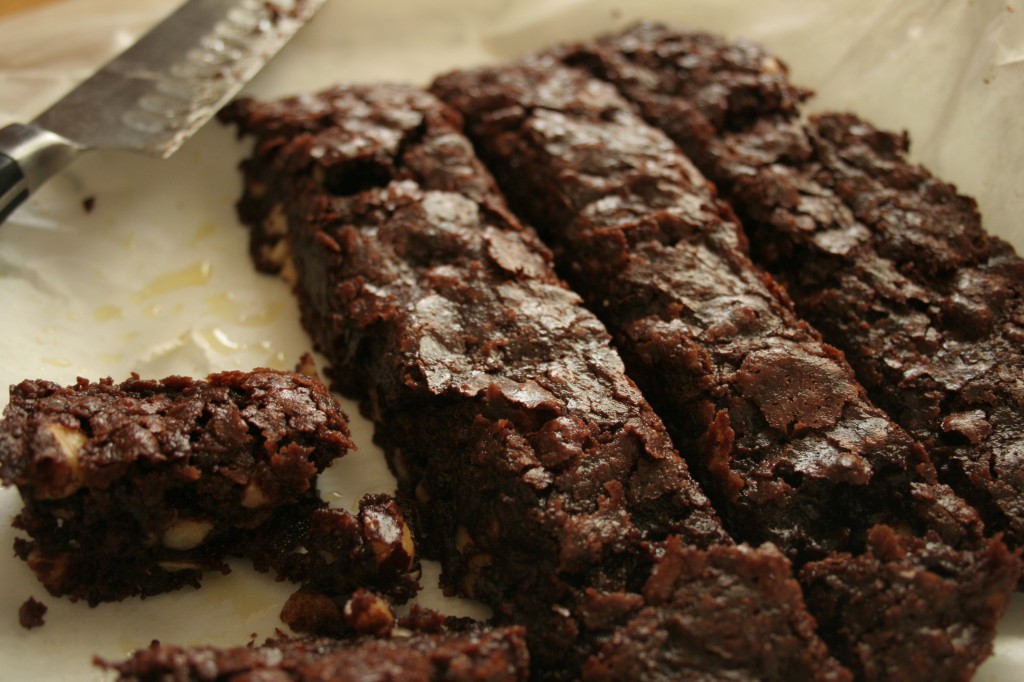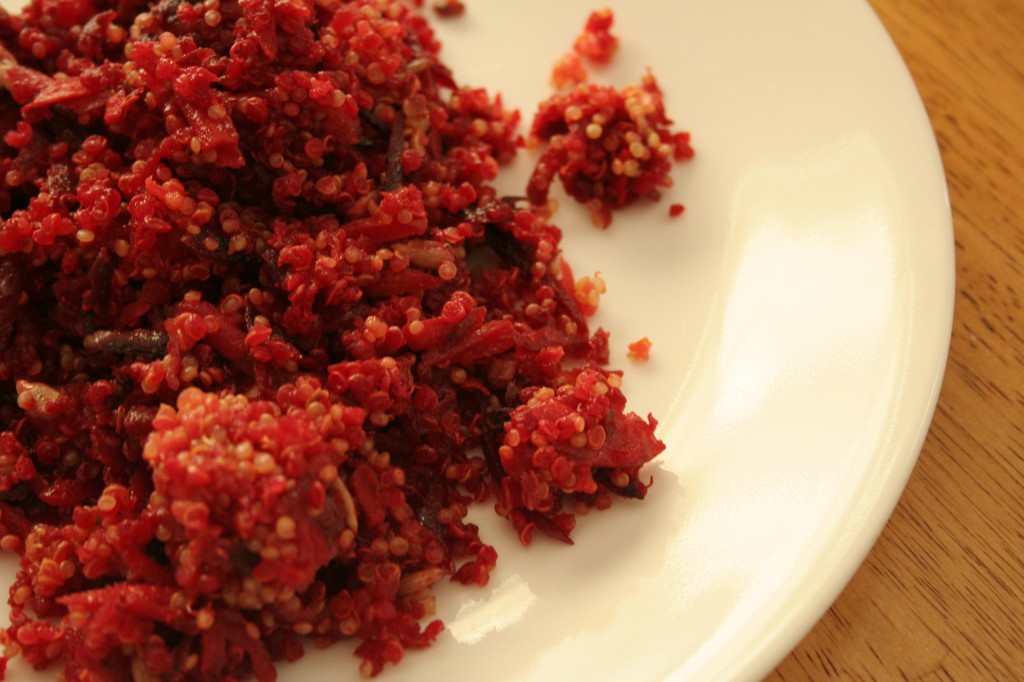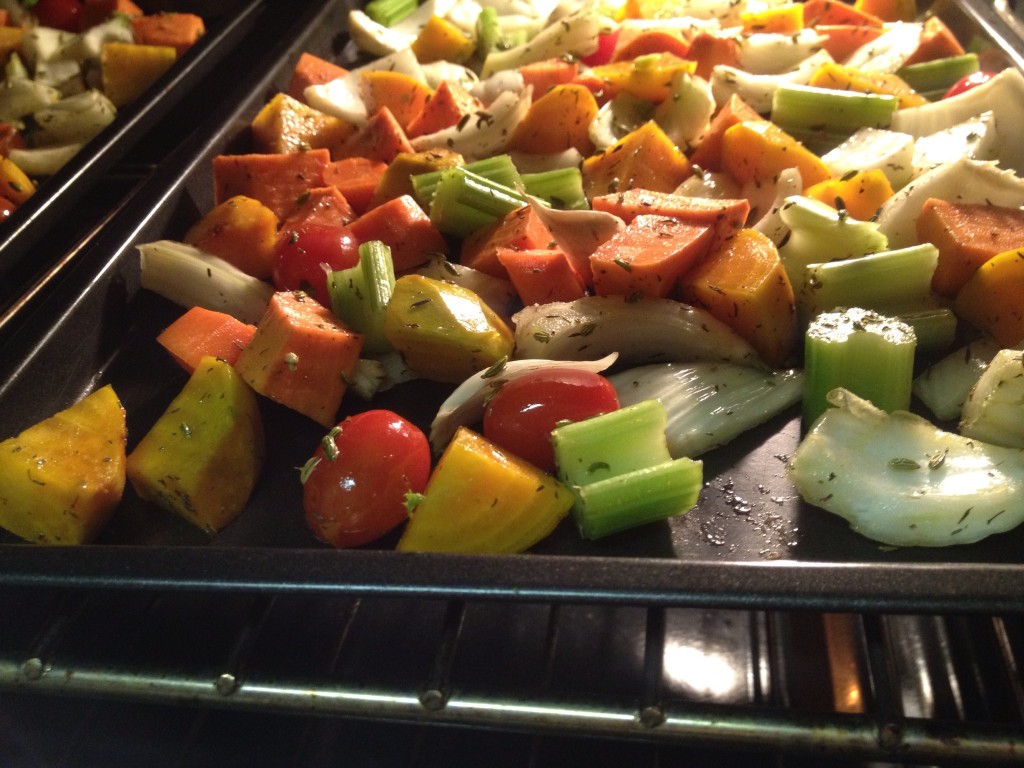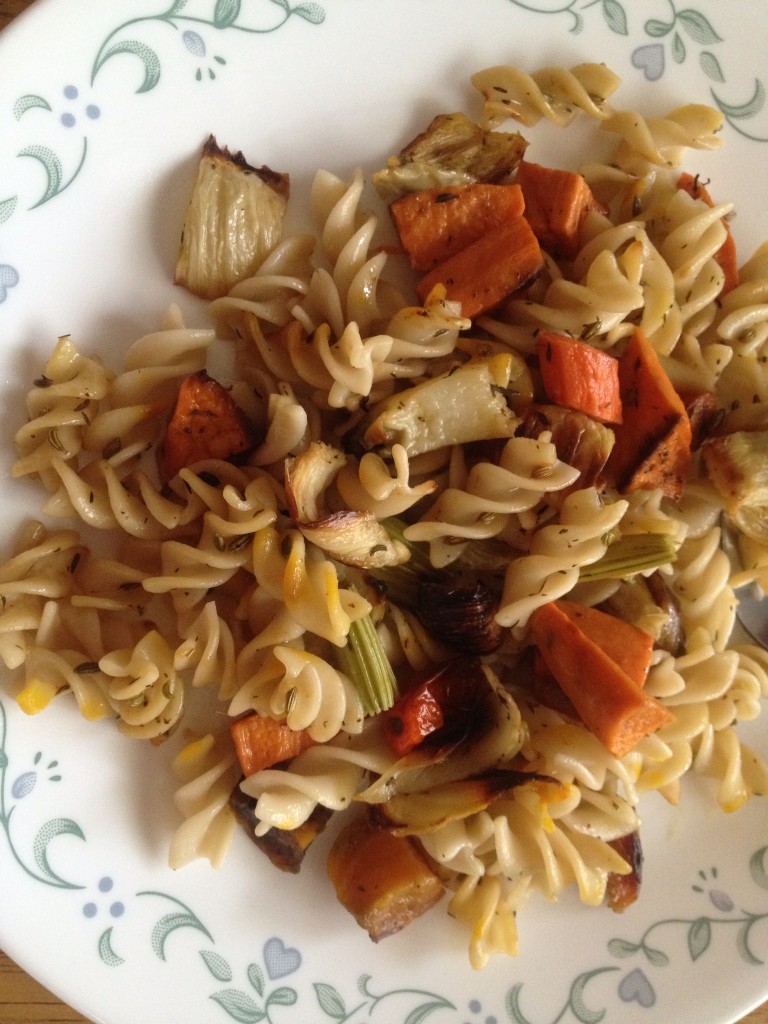I love reading about food.
P calls it an obsession. “You read food blogs, you watch food TV and you buy more cookbooks!” His point? All these are merely passive activities; you need to get into the kitchen and “get your hands dirty,” as an experienced cook would point out.
Sure, I get “my hands dirty,” and on a daily basis… dinner and lunch, most days of the week. All that being said, there is a certain pleasure derived from reading about food. And it’s doubled when I am eating something delicious at the same time. This routine dates back to childhood. One of the most delicious dishes Mummy used to cook was an okra-potato sabzi, served with piping hot rotis. It was a favorite of G’s and mine. So, on the nights when okra-potato sabzi would be on the menu, G and I would race to the bookshelf and pick out our favorite books. Then, balancing the plate of food in one hand and holding the book in the other, we would each settle down into the comfy sofa chair and proceed to read and eat.
I don’t think Mom or Dad were particularly excited at the habit of reading during dinner (or lunch) but they chose to turn a blind eye. What can I say… they knew the right battles to pick when it came to their daughters.
I picked a copy of Madhur Jaffrey’s memoir Climbing the Mango Trees: A Memoir of a Childhood in India from the library. I think what piqued my interest was the fact that she is a celebrated cook and I figured that food would feature prominently in the book. And I was right. Madhur Jaffrey hails from the Kayastha community that lived in North India. Affluent and cultured, the Mathur (her maiden name) family enjoyed many luxuries that included good food, music, art, literature and travel. The book contains vivid descriptions of traditional Kayastha dishes, both simple and elaborate, featuring meat, spices, vegetables dried fruit, nuts, etc. The Kayastha community is not traditionally vegetarian, so meat and vegetable preparations are both featured in the book. Yes, recipes are included as well.
Here is a recipe that I adapted from the book. The original preparation features carrots but I used sweet potatoes instead.
Ingredients
2 tbsp oil
1 green chilli (chopped)
Asafoetida (hing)
1/4 tsp cumin seeds
1 lb. diced sweet potatoes
3 tbsp dried fenugreek leaves (kasoori methi)
1 tsp garam masala
1 cup fresh cilantro
salt to taste
Method
- Heat oil in a pan. Add cumin seeds, chopped green chilli, asafoetida.
- As soon as the cumin seeds begin to splutter, add the diced sweet potatoes and salt. Stir well, reduce the heat.
- Add the dried fenugreek leaves and mix well. Add 2 – 3 tbsp water, let it simmer.
- When the sweet potatoes are cooked (taste a piece to check for softness), add the chopped cilantro leaves and garam masala. Stir. Turn off the heat.
Notes
This is a simple yet delicious preparation. The mild sweetness of the sweet potatoes and the leafy flavor of the cilantro-fenugreek combination make a good couple. Kasoori methi can be found at most Indian stores, FYI. I think a few drops of lime/lemon juice would be a great addition to this dish. Sweet potatoes cook up in a jiffy and are easy to digest. I hardly ever buy potatoes now, preferring sweet potatoes instead.
